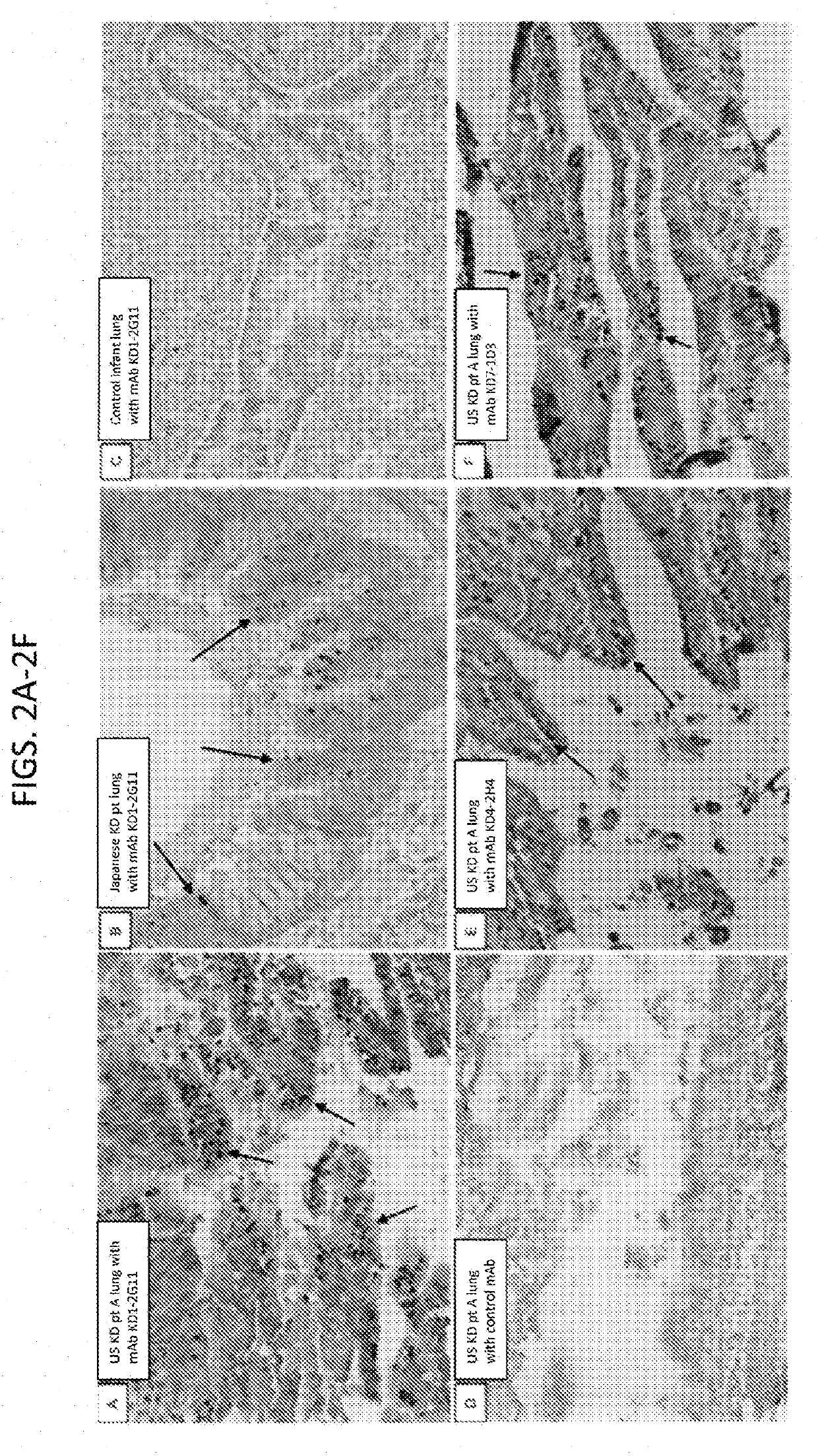Kawasaki disease antibodies identify hepacivirus peptides
a technology of hepacivirus and antibodies, which is applied in the field of kawasaki disease antibodies identifying hepacivirus peptides, can solve the problems of not yielding specific antigens, potentially severe or even fatal coronary artery aneurysms in infants and children
- Summary
- Abstract
- Description
- Claims
- Application Information
AI Technical Summary
Benefits of technology
Problems solved by technology
Method used
Image
Examples
example 1
[0058]The embodiment described here demonstrates the development of monoclonal antibodies based on plasmablasts isolated from subjects diagnosed with KD. The embodiment described in this example also demonstrates the binding of the monoclonal antibodies to hepacivirus C NS4A.
[0059]Traditional approaches of cultivating an infectious agent from patient tissues, as well as molecular biology approaches such as deep sequencing of KD tissues (7), have been unrevealing, indicating that alternative approaches to solve this problem are needed. Analysis of peripheral blood plasmablasts is emerging as a powerful tool in studies of pathogenesis, diagnosis, and therapeutic discovery in infectious diseases (8-16), vaccine science (16-22), and autoimmune disease (23, 24). Multiple studies have shown that >75% of peripheral blood plasmablasts express antibodies specific to antigenic targets of an ongoing immune response (25-28). Identification of specific KD antigens would facilitate diagnostic tes...
PUM
| Property | Measurement | Unit |
|---|---|---|
| Light | aaaaa | aaaaa |
Abstract
Description
Claims
Application Information
 Login to View More
Login to View More - R&D Engineer
- R&D Manager
- IP Professional
- Industry Leading Data Capabilities
- Powerful AI technology
- Patent DNA Extraction
Browse by: Latest US Patents, China's latest patents, Technical Efficacy Thesaurus, Application Domain, Technology Topic, Popular Technical Reports.
© 2024 PatSnap. All rights reserved.Legal|Privacy policy|Modern Slavery Act Transparency Statement|Sitemap|About US| Contact US: help@patsnap.com










